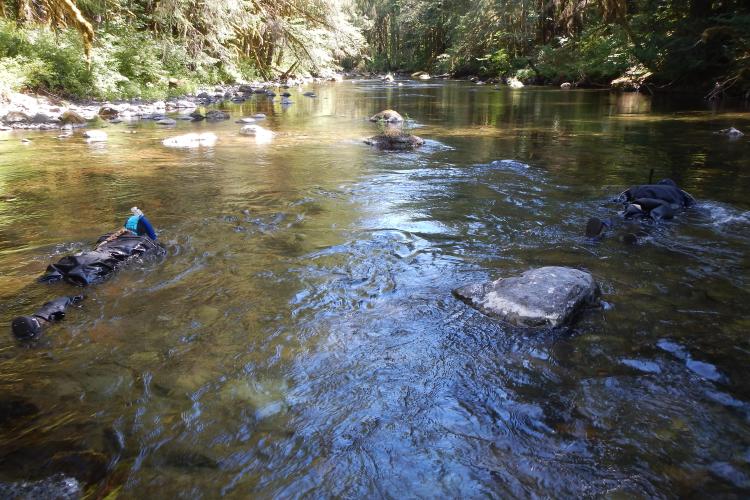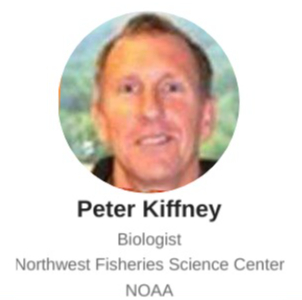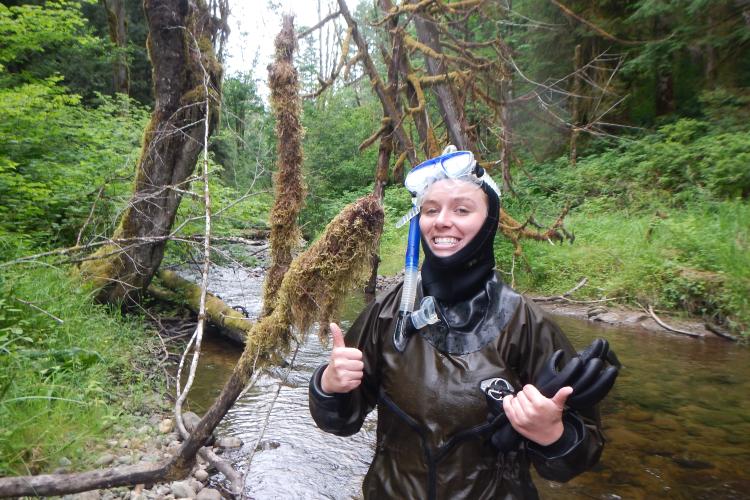|

Image: NOAA
Pacific Salmon Return On Their Own To Restored Washington State Watershed
 UNITED STATES
UNITED STATES
Monday, May 29, 2023, 02:00 (GMT + 9)
Given time and space, salmon don’t need our help returning to suitable habitat.
Pacific Northwest salmon need cold water—and the ability to migrate thousands of miles from the river to the ocean and back again—to spawn. So, we invest millions of dollars in restoring and reconnecting these salmon (such as coho and Chinook salmon) to their habitat. Still, we lack a solid understanding of how effective restoration of migratory corridors is in rebuilding salmon populations. We often don't study the systems long enough or over a broad enough area to see the long-term, watershed-scale impacts.
The researchers found that restoring habitat connectivity works, but recovery takes time. In this case, it took almost a decade to see some species, such as Chinook salmon, returning to a point where population growth slowed to a plateau. This indicated they had likely reached their recovery limit. Moreover, the researchers found that anadromous coho were still increasing at the end of the study 15 years after restoration. The findings were published recently in the scientific journal Ecosphere.

NOAA Fisheries researchers set up a study to document the recovery of coho and Chinook salmon returning to the Cedar River Municipal Watershed in western Washington. It was their first time in the watershed after a 100-year absence following the restoration of a migratory corridor.
A Study 18 Years in the Making
Built in 1901 without fish passage, Landsburg Dam led to the local extinction of anadromous salmon above the dam in the municipal watershed. In 2003, the city of Seattle installed a fish ladder to provide migrating fish a way around this barrier. They also supported an 18-year-long study to quantify the effectiveness of this restoration in re-establishing anadromous salmon above the dam.
“First of all, restoration effectiveness is rare, but when it is done, it is often not carried out over long enough periods or a large enough spatial scale to really understand the effect of habitat restoration on salmon,” says Peter Kiffney, a biologist at NOAA’s Northwest Fisheries Science Center and lead author of the study.
 Intensive monitoring is difficult because salmon have a multi-year life cycle and depend on both fresh and saltwater to survive. They are also highly mobile, making extensive monitoring studies necessary to understand how they respond to restoration. Intensive monitoring is difficult because salmon have a multi-year life cycle and depend on both fresh and saltwater to survive. They are also highly mobile, making extensive monitoring studies necessary to understand how they respond to restoration.
Salmon Reintroduction at the Watershed Level
The researchers also found that the salmon didn't occupy the watershed uniformly. Habitat isn’t the same throughout the watershed. “We’d expect the fish to find the most suitable habitat given time,” says Kiffney. “And that’s exactly what happened.”
“We might have missed some spatial differences in recovery if we’d had a narrower study area,” Kiffney continues. “But we monitored all available habitat, not just one stretch of restored stream.” This allowed the researchers to show that population establishment slowed upstream away from the dam.
In addition to natural species re-establishment, some restoration efforts involve adding hatchery fish to the system to speed recovery. In some cases, this might be necessary, such as when habitat restoration might lead to short-term changes to the physical environment that may limit species recovery.

This groundbreaking study, the longest and one of the largest such efforts in the Pacific Northwest, offers a lesson to those in the restoration community.
However, this project didn’t actively add hatchery fish. There were already adults, both of hatchery and natural-origin, spawning just below the site of restoration. Also, the habitat above the dam was of high quality. So, it was decided to let population establishment occur naturally without additional intervention.
“We just allowed the adult salmon that were returning to spawn below the dam to colonize the area naturally,” notes Kiffney. “We found that anadromous salmon, if there is a nearby source population, can return to good habitat on their own, without our intervention. They don’t always need a boost.”
Watershed Study Requires a Collaborative Approach
Numerous partners, including the University of Washington and Seattle Public Utilities, supported the study. Often this came in the form of volunteer help. For example, Kiffney and his team relied on more than 100 student interns and volunteers to study the watershed between 2000 and 2018. After intensive training, these volunteers and interns would snorkel select sections of the watershed each year to document changes.
“If we can reconnect isolated habitats, the fish will come back on their own given a nearby source population and good quality habitat for the new species,” concludes Kiffney.
Last updated by Northwest Fisheries Science Center / NOAA
[email protected]
www.seafood.media
|



